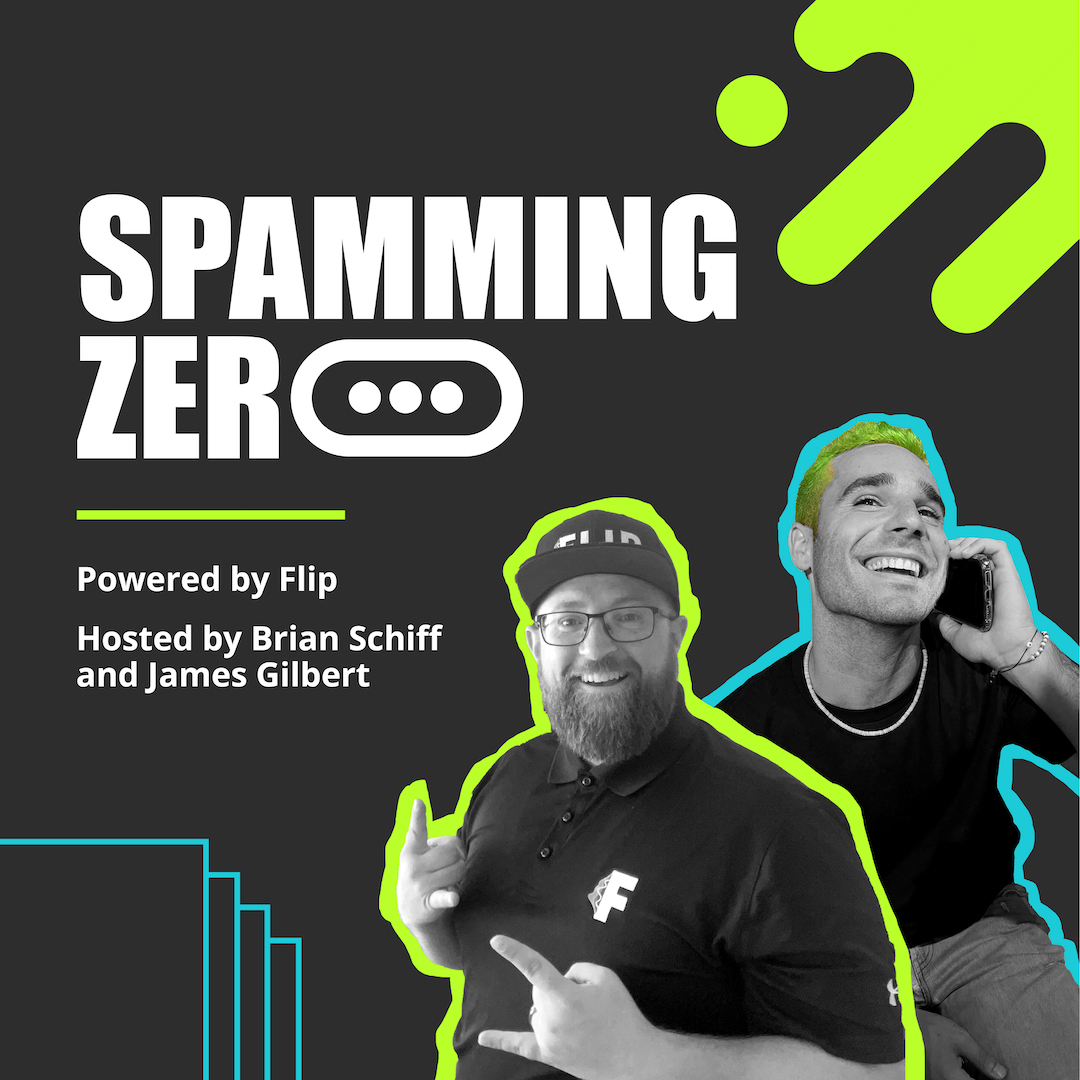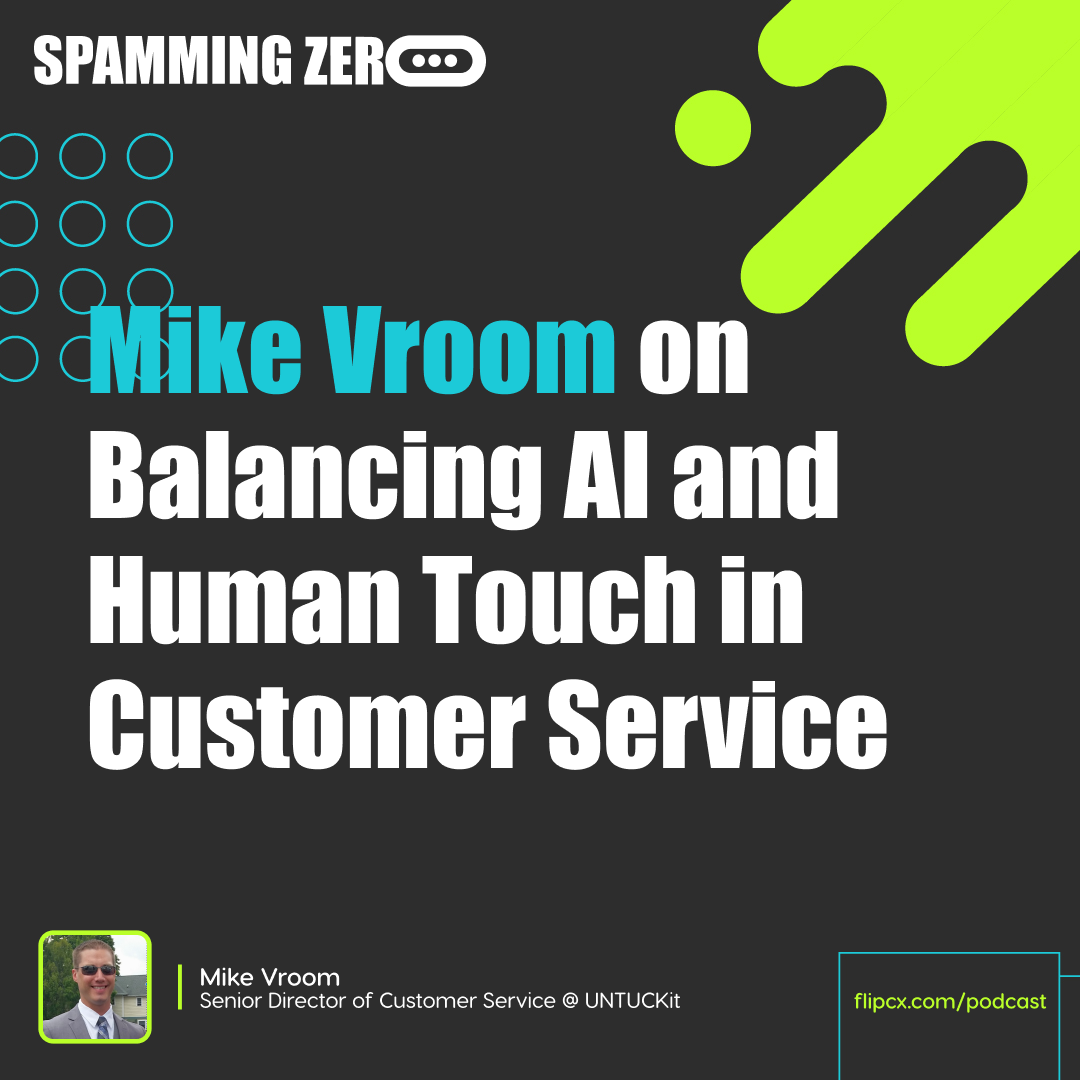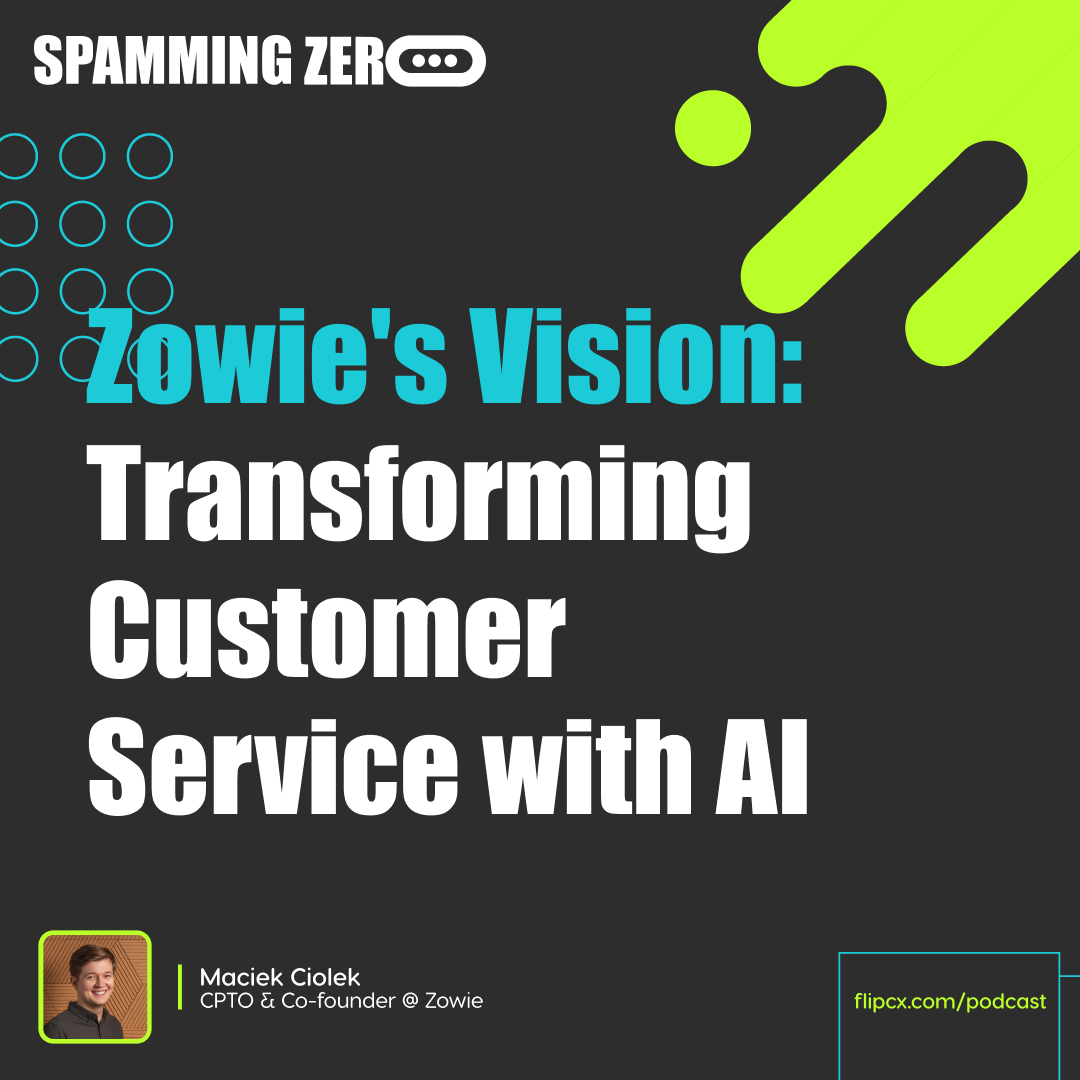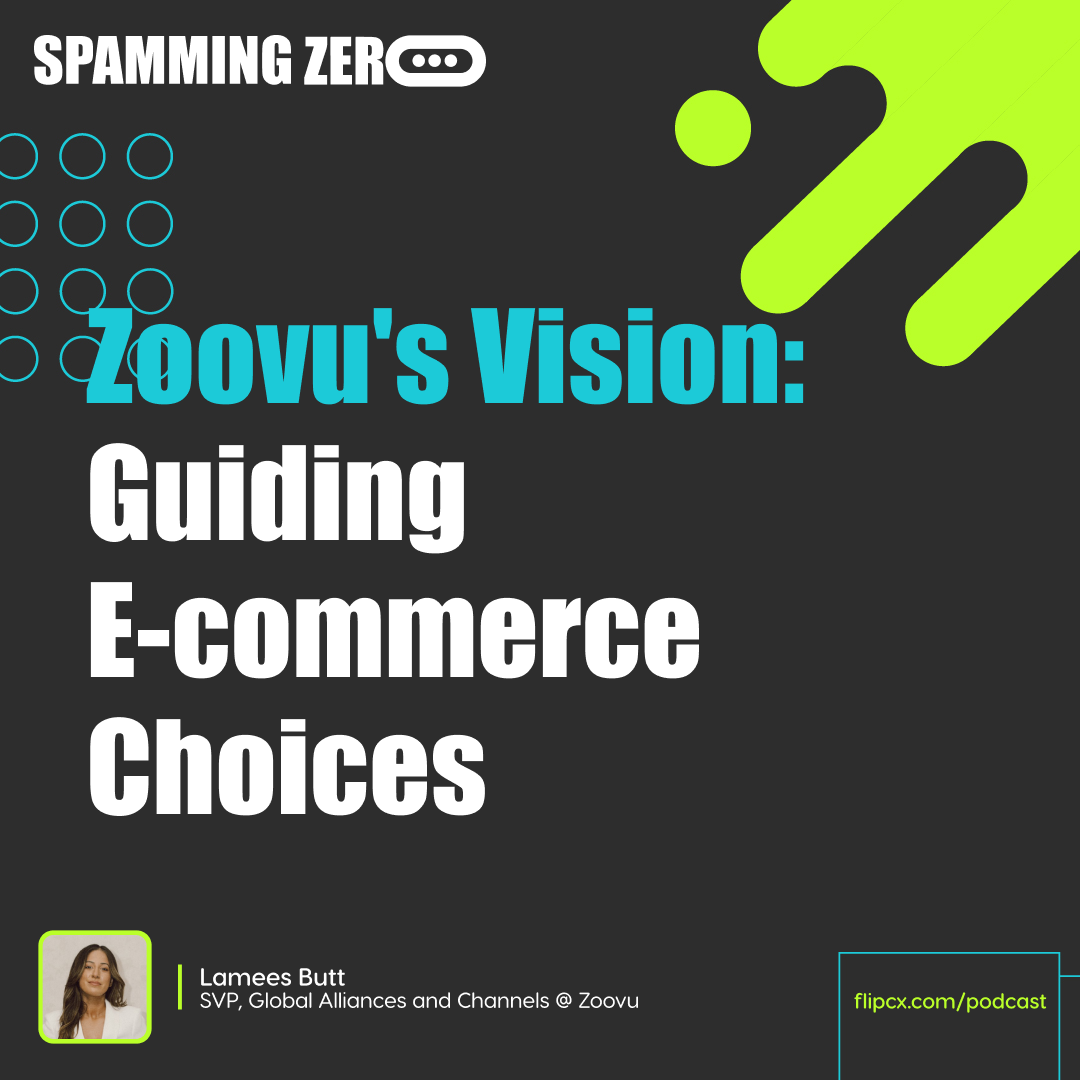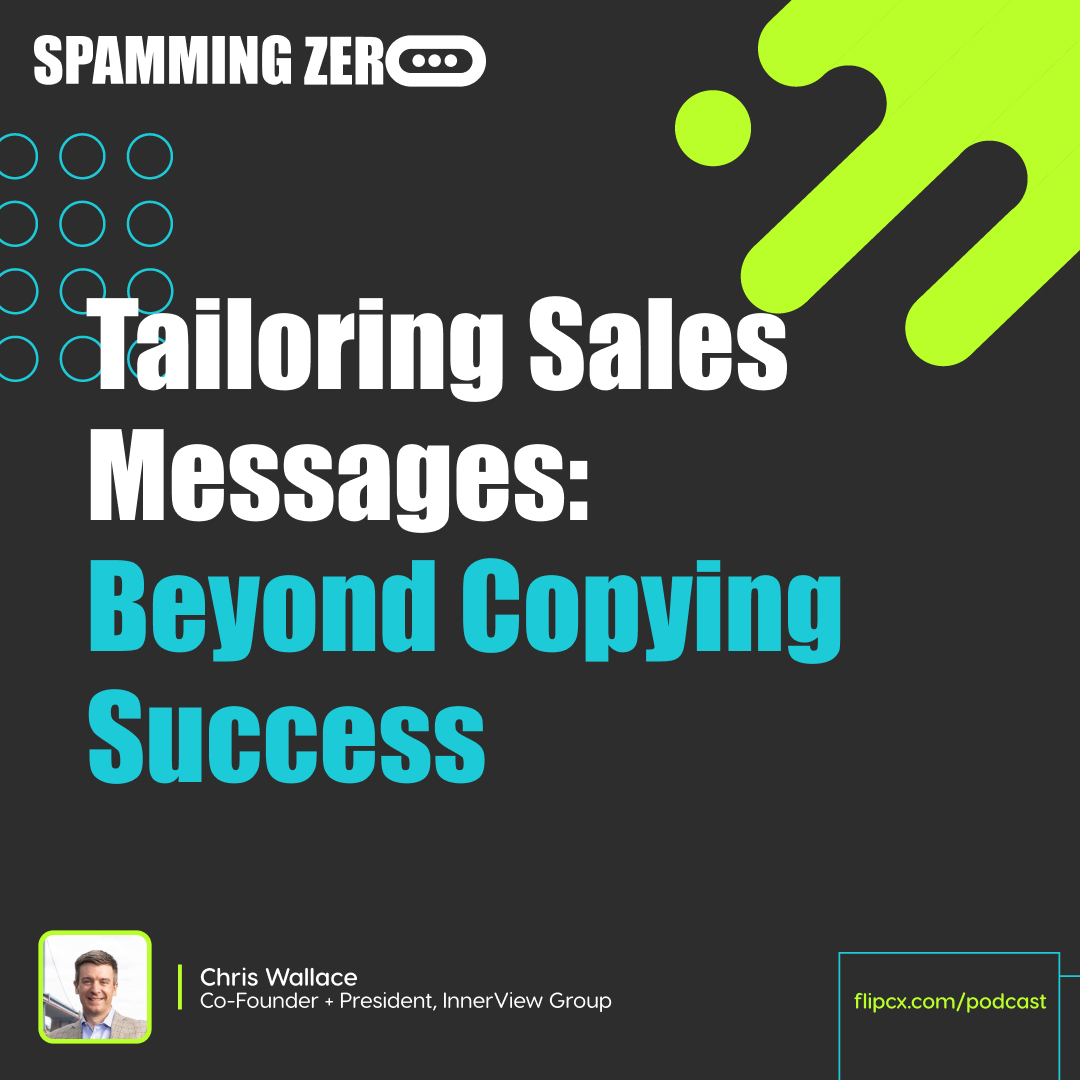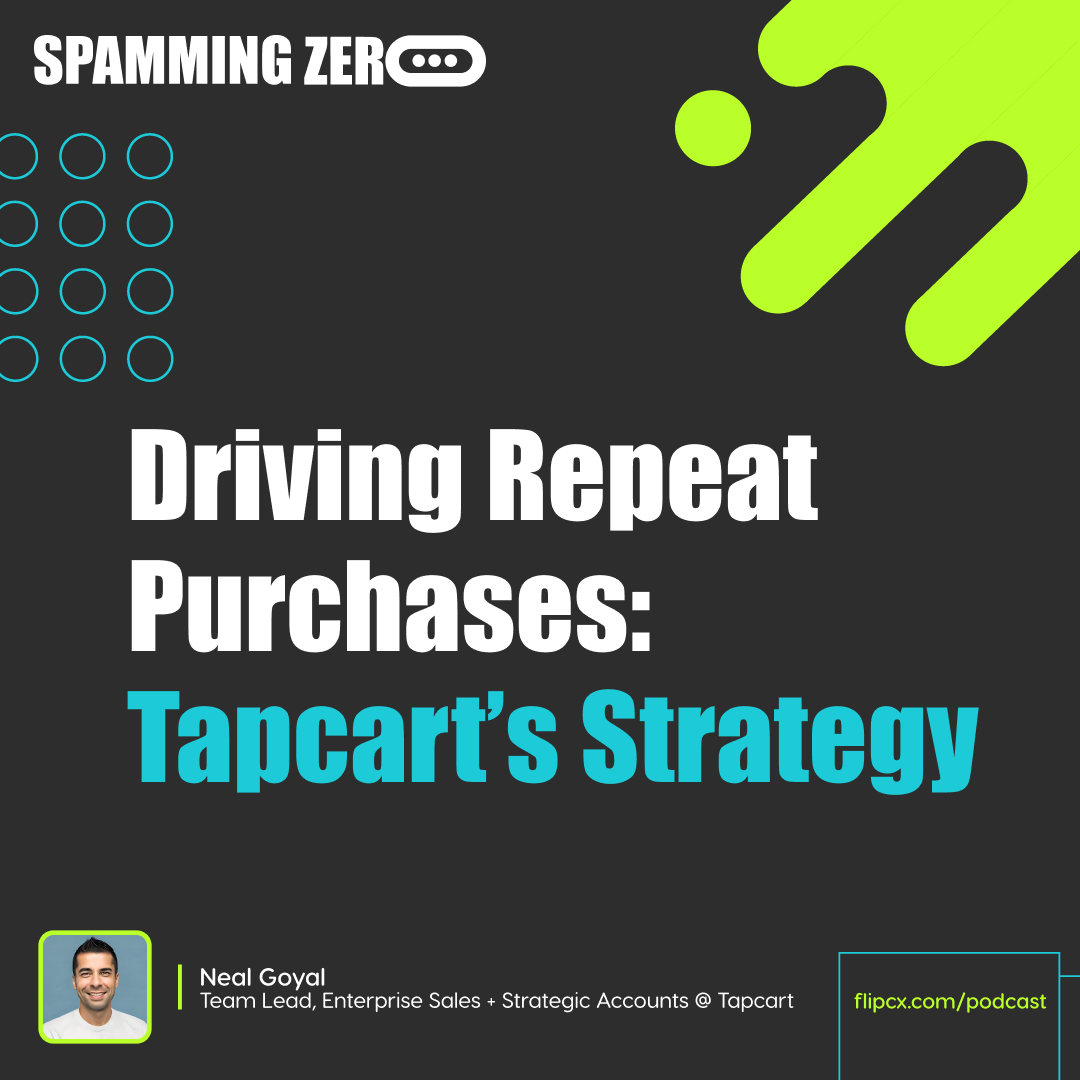Episode 21: HiOperator's Liz Tsai On Empowering Your Contact Center To Deliver Exceptional Experience This Peak Season
- 0.5
- 1
- 1.25
- 1.5
- 1.75
- 2
James: Hey everyone. Welcome to this episode of Spamming Zero. I am excited about this, because this one is really just packed with tons of stuff. We talk about empathy the agents need to have. We talk about the empathy that we all need to have with agents and how really they are the champions of this story and the customers experience story. We even put Brian and Liz in the hot seat, asking them why more CEOs don't do journey mapping exercises to develop a true customer experience strategy. Tons and tons of stuff to get in this episode. Hope you look forward to it. We are joined by Liz Tsai, who is the CEO and co- founder of HiOperator. HiOperator is a customer services, a service solution that allows businesses to handle client tickets faster and more accurately. Whoa, messed up on that. The power of human and AI technology. Tsai is an MIT graduate with nearly 10 years of experience researching and developing emerging technologies. Stay tuned for this episode. It's going to be a good one. We'd like to thank our current sponsor of the month, Aircall. Aircall to IO. Go check them out. Love what they do. They also just reached a hundred million in revenue, which is incredible. We partner with them. They're a big part of our ecosystem. Aircall is a cloud- based call center and phone system of choice for modern businesses. A voice platform that integrates seamlessly with popular productivity and help desk tools. Aircall was built to make phone support easy to manage and accessible, transparent and collaborative. Aircall believes that a great conversation is the most powerful way to communicate with customers, prospects, candidates and colleagues. We tend to agree. They are as equally invested with voice and sound as we are. I'm James.
Brian: And I'm Brian.
James: And this is Spamming Zero. (music)
Brian: Here We go. Another episode of Spamming Zero with Liz Tsai from HiOperator. How are you Liz?
Liz Si: I am excellent. It's a great hump Day. Sunny in Dallas. How are you?
Brian: Doing well. Appreciate you joining us today. Liz, let's start with, what is just top of mind for you right now?
Liz Si: Well, a lot of it is steering support in a way that it's going to allow for the holidays, but then also in a way that fits the budgets and ROIs of everyone that we're speaking to in the e- commerce world today.
James: How much different do you find your conversations are this time of year versus the rest of the year?
Liz Si: It's a little bit more urgency this time of year, right? Everyone's saying, "Okay, Q4 is legitimately here. How are we going to scale? What's the plan? What's the backup plan? Who knows what shipping's going to do this year?" There's a wider margin for error than there usually is in previous years even.
Brian: We're also seeing a lot of brands out there that, supply seems to be a little bit of an issue right now. Just kind of across a lot of brands. So supply's low, demand's really high, which means volumes go up. What do you see in your teams in how you, with other brands that you work with, what do you see is the one thing that can help brands get ahead of that? How can they train agents? How can they help the experience with customers be better so that they can get ahead of some of that?
Liz Si: So we think of customer service and customer experience as sort of, there's a skeleton, and now those are your processes. Those are the, if this, then that. If this happens, this is what the policy is. If this happens, that's what it is. And that's the stuff that you would find, you really have to have game plan out a little bit. If all of the deliveries get delayed two days before Christmas, this is what we're going to do. This is what we're going to offer. This is the game plan. And that's where the skeleton of customer experience. And then you have sort of the fluffy stuff on top. And that is the brand voice, that's the communication, that's the tone and the empathy that you're going to strike with your customers. And that's a bit where it really comes down to having the right people, training the right people and empowering them to say, " Hey, these are my policies, but this is how we're going to deliver this service against those policies."
Brian: We did an episode with a gentleman named Taylor Wells and we talked about empathy, and how important empathy is in our conversations and just the overall experience that people have. What does empathy really mean to you?
Liz Si: I can answer it two ways. Empathy is the ability to put yourself in that customer's shoes and almost ask yourself, " Hey, what would I want to hear if I'm the customer?" But I actually think that, really great experience especially in tough situations when you may or may not be ruining Christmas, needs to go beyond empathy. It's not just say, " Hey, I understand how you feel." It's also, " Hey, I understand how you feel," that's how you deescalate it, but also, " This is what we're going to do to try and make it better for you." So we think of it as, not just delivering empathy but almost empowered empathy with the whole structure behind it. Where you need to have the ability to actually help, we need to empower them and then empathize what... that's what makes that solution hit.
Brian: When I call a phone line, I always appreciate when people... This simple little thing. Just simply asking, " How are you today?" That sounds so weird, but it's just such a simple thing and people forget to ask. And for some reason when we hear that... Because we typically hear that in our day to day lives with people that we love and care about. And so when somebody who is not in that little scope of our lives asks you how you are, it does something different. And that's what we love about voice, right, is because that's the voice side of things. That's like the human side of the voice connection that happens so... It's the minute level, and it's at all the inner tangibles of why trust is needed through things like that.
Liz Si: Absolutely. But the other thing is, and you actually raise a good point there, when you're talking to your friends and your family, they have a ton of context. They know who you are, they're up to date on your life. The hard part about scaling customer experience is scaling empathy. Whether you pick up the phone or you email a customer or a customer emails in, they've been living whatever their mental state is, for the last however long they've been waiting to call you or drafting that email. As a customer service agent, you're stepping into that with fairly little context. And so when you are in holiday season, you're handling dozens if not hundreds of contacts a day, as a customer service rep, what we think a lot about is, how do we give that context to the agents at their fingertips so that they can get up to speed as quickly as possible? Because without context, you can't really develop empathy and deliver that at scale.
James: How do you actually practically deliver that context for the agents?
Liz Si: So at HiOperator, we do that with our software. We have a whole, consider a workflow automation platform, but what it does is it takes all the different data points we have about a customer. We aggregate it in one place and we basically serve up to the agent, " Hey, here's what's happening, here's some context and here's sort of a suggested resolution for them." Because otherwise the agent is going to be trying to read or listen and then trying to look up three different systems at once and being like, " Okay, what happened? Are they really upset because they're a first time customer or are they really upset because they are a 10th time customer, and we've messed it up each of the last three times?" It's context that, that we try and deliver in front of the agents when they handle that contact.
James: Is there a HiOperator platform that is integrating into the help desk and maybe the e- commerce platform and other critical systems of record that these brands have in order to grab and centralize the information that matters?
Liz Si: 100%. We integrate with pretty much everything that an agent would touch to actually do a customer service contact. The idea is that... When you think about what customer service agents do, a lot of what they're doing is swivel seating between different systems and they're trying to aggregate data points from three different systems. And when you're doing that and you're also dealing with an irate customer, it's a lot going on. So we think that the future of delivering scalable, empathetic customer experience is for software to do all of that integration and swivel seating and sort of aggregating that data for them.
James: You sound like this is a little view in to our product meetings that happen. Yeah, it's all of the same kind of bigger viewpoints and insights around, what are the building blocks of being able to deliver a good experience in an efficient way? And it's almost even less so about the efficient PCS. Yes, there are efficiency gains that come. But if you don't know who you're talking to, where they are in their journey with the brand, where they are in their journey of a purchase, where they are in their journey of trying to solve whatever problem it is that they're reaching out to you about, then you're going in blind. And as you said, great, you're just thrown into the marsh pit with them and what solution can you really give? Maybe you can just give whatever the generic, " This applies to everybody," solution is, but that's when so much of the magic is lost. The great things happen when it can be personalized, and personalized means more than just referring to them by name when they reach out to you.
Liz Si: No, I mean the future of this is, I think there's always this sort of tension. Where it's, " Automation, automation is the future of customer service." That's all great, but how do you do that without losing the humanity piece of that? Because humans really do deliver better empathy, for the most part, that something automated can't. But where automation can make humans better, faster, stronger, is in delivering all of that aggregation, all of these sort of black and white deterministic pieces that an agent would normally do. That's what makes them sort of the Ironman suit that empowers your agents more.
James: There's empathy in the actual conversation that's happening, but there's also just empathy in everything else that's wrapped around that. So, what I mean is, if you only let people contact you during very specific hours of the day, times of the week. And they're only allowed to use very limited channels. And it takes them forever. And all the contact information is hidden on your website. And they need to jump through 12 hoops in order to even get to the point where they're waiting on hold to then be able to talk to you. The conversation hasn't even started, yet there is clearly been a lack of empathy that has happened in the experience. Those are the other very natural mesh points that exist between, automation, which has the benefit of infinite scalability. Always on, always available, whatever. With, " Hey, conversation is happening." This is an important customer that has something that they care deeply about and there needs to be a conversation with the brand that happens here, and a one- to- one human connection. And allowing... I mean, I don't know, I don't want to sound cliche. Everybody talks about, " Let the robots do what they're good at and the people do what they're good at it."
Liz Si: 100%.
James: But these are some of those practical examples of that.
Liz Si: But also being transparent with your customer. I think customers, they don't want to dig through five levels of a support page or an IVR to be like, " Oh actually there are no agents available." So much of it is, being clear about where you are, what you're going to meet your customer at, and just delivering those expectations. People don't want to hear, " Hey, it might arrive by Christmas." They want to know, " Hey, you know what? We messed up, it's going to be late, but this is what's happening." Even if you can't provide an instantaneous response, customers want to know what they're supposed to expect on the other side.
Brian: We just put an offer on a house. So one of the things that you do, because we've been renting while we've been trying to find the right house and it's been just a horrible experience renting, is you start switching over all of your utilities and then your providers that provide your internet and all that other stuff. So I get on, what should be a pretty simple process. I go on directtvstream. com. Now, I normally would not have a TV service, but I am a massive Utah jazz fan, so I literally just subscribe to DirecTV Stream just for one channel. But here's what's crazy. So, I think it's going to be an easy process, I'm like, " I'm going to cancel this for right now." Because there's not really a point of us having it, especially in the middle of a move. So I go online and I get thrown through a loop. So because DirectTV just got acquired by AT& T, which consumers... This is the important part to understand as a brand, consumers don't know this. I would only know this just because I've been in business and I'm an executive, so I know what it's like to do M& A. And I know how much can get lost in translation there. But as a consumer, they're not going to understand, " Well, AT& T just grabbed DirecTV and now that's why there's maybe a clunky process." I spent an hour going through this chat, support. Trying to log in, forgot my password, tried to do the password thing. And I eventually was like, " I just got to call somebody." And got somebody on the phone and they were able to cancel it within just a few seconds. And it reminds me of how much empathy I have for customer service agents. Especially right now. And especially even after Christmas too, because that's when returns and all this other stuff is going to happen. Agents... Naturally, we as humans kind of don't want to call the phone. We're always trying to figure out ways in which we can avoid it. But ultimately when we want our deepest problem solved, we have to call somebody and we have to get on the phone with them. This is what happened to me. It was a deeper problem. I had to figure it out. I tried to figure it out on my own. I failed. So I had to get somebody on the phone. And have so much empathy for agents because they're treated poorly by so many people. It's a terrible situation. On top of that, they're doing nothing but trying to help. And they're trying to provide empathy, they're trying to provide a solution to the problem. Sometimes they don't always have the solution to the problem, but that's not their fault.
James: Just to go one layer deeper on one of the pieces that you said, and tie it back to what we were saying earlier. You said how customers that are calling in are so frustrated with the agents at the point when they show up at the door. To me, yes, you can blame the customer. You're on the phone with another human being that... Everything up until that point, is it really that person's fault? Of course it's not that person's fault. They didn't mess up the product production, they didn't promise you a delivery that hasn't happened. Of course it's not their fault and you're taking it out on somebody that isn't the source of the problem. But I also think more times than not, there is a level of sympathy. People don't expect brands to be perfect. They don't expect there to never be problems. Everybody understands that there are issues that happen. Nine times out of 10, what is pushing that frustration level up one, two or 10 notches is all of the lack of empathy that exists in the experience before you're getting on the phone with the person. And it is, how hard it is to get in touch with them, and maybe some bad automated solutions that are there to try and kick you out or call you back later. Yeah, the agents end up dealing with the brunt of this experience that was poorly designed. And then there's also the double edged sword of, the companies that are really hiding from their customers are the same ones that are also under investing from a budgetary standpoint into their headcount. And now, not only are those agents dealing with the most frustrated customers, but they're also dealing with the highest volume of contacts, whatever channel it might be. So they're just really kind of taking it from all sides.
Liz Si: Absolutely. Customer service agents, for the most part, they want to try and do their best. And I think sometimes as a consumer you might say, " Ugh, why can't this dude just get customer service right? How hard could it be?" And I think what they somebody forget is that, scaling customer service and delivery great CX is actually really hard.
James: Is it?
Liz Si: Yes, you're just talking to another human, but there's so much that goes into that, that from an agent's perspective, do they have full visibility? They have to have the ability to do things. There are all these things that, I think when you start to think about designing a good customer experience, it's a lot more difficult than just saying, " Hey, why can't, whatever large telecom company, just hire better agents?" But I also think when you think about your experience, James, where you spent a long time navigating this entire platform before you said, " I give up, I'm calling them." Part of that is kind of expectation setting. You went onto that website with an expectation that you could do something about your problem by clicking through things. Had you known the answer is no, you would've called right out the gate. Or, if there was a little email form where he could just say, " Hey, my name is James. This is my account. This is when I need it switched over. Do it for me." And then it said, " Hey, we'll get back to you within 24 hours." You would've been like, " Great. Fine. My problem is resolved." But what happened there was that, there was a inaudible you had the expectation that you could fix it, and the one that failed, it got you that point of frustration. Because for the consumer, I do think sometimes we think, " Hey, I'm really upset with this company's policies. I know it's not this customer service rep's fault, but how am I going to make my voice heard?" And when there isn't that clear escalation loop, I think people have empathy for their agent, but they do have these frustrations and they don't know where else to direct it. Because, if it's not at the agent, I guess you have a chance to express your opinions at the customer satisfaction level. But all those things are ultimately, in most cases, boiling down to that customer service rep's metrics, rather than, " Hey, what's the broader product feedback we're trying to get out of that?"
Brian: The customer service agents and customer service just in general are left with the pieces that they've been given. And oftentimes it's an incomplete puzzle. And it's, they're trying to put all these pieces of the puzzle that they do have and try to create a picture. And the picture's not very clear, it's not set up for the consumer, to your point. And oftentimes the communication isn't well done. Even sometimes they'll go to the lengths that Brian's talking about, which is completely hiding a phone number altogether so that they can't be reached unless you go down a rabbit hole of trying to find it and do a, I don't know, a Google search to find it, right?
James: Yeah.
Brian: And that's what's wild is, so many brands are doing this. They're hiding this stuff and hiding the complete picture. Not clearly communicating to their customers. And then what they're doing is, they're expecting customer service and support to figure out the customer experience. It's wild.
Liz Si: Yeah. But then not feeding that back into the loop, right?
James: Yeah.
Liz Si: I mean. So for one particular delivery ad that I use all the time, if they say, forget an item. The way to get that addressed is actually to rate the delivery poorly, and then the next page will say, " Okay, well what went wrong? Were you missing something?" But think about what you've just conflated there. It might have been a great delivery person, it might have been a great customer service rep, but I'm trying to get my missing item addressed, so I have to go over and rate it poorly.
James: We've spoken a little bit about the holidays and how that kind of changes the purchasing behavior and the mindset of customer service and customer experience leaders. The other kind of macro thing that's going on right now is, everything with the economy. And obviously e- com and retail brands are being and have been hit particularly hard. There's kind of two driving, prevailing strategies that emerge from these situations. One is, we want to reduce our opex, we want to save money. And on the other hand, we want to invest in lifetime value and retention and making more from existing customers. Now of course... You pull from one end... It's the seesaw effect a little bit, if you will. And that's where it goes from being straightforward to not being straightforward. But how has, I guess over the course of this year, your conversations changed under that undertone.
Liz Si: I think there's this sort of two step evolution that, it needs to have it regardless, but the current economy is trying to push it along a little bit more. And that really is, one, how do you, for lack of a better term, cut costs and be more cost effective when it comes to customer support, but at the same time, make it to now figure out the ROI. Make it a profit retention center rather than a cost center. And these two things I think actually kind of go hand in hand because there are really only three ways to make your customers support or costs less. You can pay people less, no bueno, not good at all. You can minimize your number of contacts either by being perfect or by hiding that support form as far away as you possibly can. Or three, I think could really try and augment your current team and make people more productive. And we've talked a lot about this, but a combination of automation, riding people to the right place, setting expectations, and all of that. And that's really where HiOperators sits. But I think it's actually worth talking a little bit more about, how do you demonstrate that ROI of your customer experience org? Because I find that some teams are starting to think about it more from a marketing angle, which is, " Hey, how do we AB test?" How do we actually determine, " Hey, what's the best retention incentive to offer?" How do we aggregate those customer data points to increase our optimal sort of retention ROI? But similar to marketing, before you can do that, you have to instrument your org. If you don't know what factors you're working with, you can't really AB test out the other end. And I think one of the things that's really being driven right now is, how do we really understand brast hacks, what are the process flows and customer experience journeys that our support agents are doing? How do we really understand and streamline that process? Because I think, six months from now, once we've done that and we know what all the touch points are. We have a great set of tags and data and all that around that. That's when they can start doing all the cool stuff marketing gets to do, which is AB test, and look for optimization and drive ROI. And that's where I think customer experience needs to get to, and the economy sort of driving that transition a bit.
James: There are a couple of reasons why, now, is going to be the time where we see the norm, the general expectation and the general quality go up one, two or 10 notches. And it starts number one, with the desire, from my vantage point. There needs to be that executive buy- in. There needs to be the focus and the attention and the care and the brain space and the time put on it. And I think that everything happening with the economy right now is creating that urgency and that desire high enough up the org with enough people. And then I think it folds into number two, which is all of the underlying tools that have really come to be over the last five, 10, even 15 years. You talk about getting all of the customer data into a centralized location so that that context can be used in real time when you're communicating with the customer. Well, all of that data lives in these other systems that have really come about with the explosion of SaaS. So you're talking about your e- comm platforms, you're talking about your help desks, you're talking about even cloud- based phone systems, returns platforms, you name it. All of that, which then makes all of this data structured and usable and then accessible through open APIs and ecosystems. And this is part of where e- com and retail is so far ahead. And then you go, you keep stacking on top of that and you say, " Okay, there is the desire. There is the data that is now in place and usable. There is technology like ours. There's the ability to automate at scale. Have high quality conversations with people. To be available 24/7. To be able to give simple solutions to people." And then there is your piece of the puzzle with the human labor. And it's been astonishing to me just how good that has gotten, while driving up the quality of the teams that you can bring on, while not paying premium prices and going beyond budget for what these brands would be. So when there is the desire and there is the data and there is the technology and there is the labor component, and it's all there, then, to me, I think over the next 12, 18, 24 months, you're going to see all of that stuff be leaned into.
Brian: Liz, I have a question for you. How do agents and how do brands that you work with, how do they articulate and bring to life the lifetime value of customers? What are some tricks that you can give people out there?
Liz Si: I think Brian, you pointed to just now that, great customer experience, it's really this orchestration of good people, great software, and then putting it all together. So the rights of SaaS has been really great because it kind of unbundled everything. And it allowed every piece of the puzzle... So whether that's the marketing site or the Shopify or... It allowed every piece of the puzzle to kind of advance. But now we're starting to see sort the aggregation. Because we've got all these SaaS platforms, but it kind of all exists in different silos and there's no orchestration across all the different layers. But then when you're really thinking about, " Hey, how do you design for LTV and how do you measure the impact of customer service on LTV all the way over here?" It's really bringing it back together across all of these disparate platforms. And that's a lot of what we do at HiOperator. Which is why we provide customer support services. But we don't just provide the people, we actually build our own software which integrates across all the different platforms that a different company uses. So our agents don't have to leave a central system to service a client, because that's what allows us to bring that data back together. It allows us to go, " Okay, here's the customer record, here are all the different actions and decisions that an agent took to service the customer." And, " Hey, maybe in this case they decided to give a 20% retention incentive." But because it's linked to the customer record and we can link it back to that account, we can then export in a way for the clients that we work with and say, " Hey, and this is the impact on retention." Well we increased that incentive from this percent to this percent, here's how the other end changed. Because I think we live in the age where there's a ton of data. All the data's actually there. You can look at your CRM and your contact history, and you can look at your order history and you can look at that customer record, but it's really bringing it all together in a way that's digestible, because your customer service leader doesn't want you have to go a hire data analyst to go assemble this report for you. It's bringing it together in a way that's digestible so the service teams and the product teams can action it. And that's what we do by combining, not just providing people, but providing people, software and analytics on top. I love it.
Brian: I 100% agree with everything you just said except for one thing. I actually don't think that customer service, in general, has access to CRM like they need to. Here's where I'm coming from with that. So, I did a lot of consulting for really big brands. Going in and helping them consolidate their CRM instances and help them just stand one up. And without fail, customer service had their own. And every other part of the organization would have their own. So they never were talking to each other. So I still think that this is a really big fundamental problem with data architecture, just in general, when it comes to your point, making it accessible and making it so that it can be acted on. I think that it's almost like a tool orchestration and architecture of just the data in general that needs to happen internally, that I still think a lot of brands struggle with. A lot of brands, they know they need access to the data. So what customer service will go do is, they'll go buy a CRM instance and it will sit in their function and it doesn't talk to other functions, so then these other functions like marketing and sales and... Then they don't know what message was sent to the customer and what offer was sent to the customer because it's in their CRM. This is where it gets disjointed. So while there's access to a lot of data, I actually think that the data needs more data scientists to orchestrate it. Or at least having one instance of a CRM that can be leveraged across multiple functions.
James: Right so there are the obvious data components to bring in. So, let's bring in the customer, an order record. Let's bring in the contact record. How far, when you think about your platform and the things that you want to bring in, how far will you go? Do you want to bring in CDP data? Do you want to bring in Klaviyo, email, SMS data? Do you want bring in loyalty platform, returns platform? How deep do you want to go into... Because every system generates data, and there are so many tools that get used. And the question then becomes, what is considered valuable and how hard do we want to try to get it? How valuable do we consider it?
Liz Si: So I will say with our platform, it's essentially a workflow automation platform that our agents use. The relative cost of bringing in an additional platform is very low for us. So it creates this testing sandbox where CX leaders can go, " Okay, well what if we change things depending on what their LTV is? What if we changed things depending on what their customer journey is?" It's a way where, because I think to what you said, James, is, yes, CS often lives in a bit of a silo. Now it doesn't mean that they don't have logins to that other CRM or that other order platform that they could go and look at. The problem is, I think people sometimes forget that you produce what you measure. And most customer service orgs are measured on some combination of customer satisfaction and first reply times, and maybe touches per resolution. And when that is what you measuring your CS org on, not that people don't want to help the customers, but it's a really big ask to say that, " Hey, you are measuring our productivity as CSAT, but there are these three other systems that you could go and check just to see if there's additional context that you bring in." And I think that's where the whole cycle doesn't quite get connected. We have people say, Oh, I have a great CX team because our CSAT is 97%." " That's great, but what's your actual business metric? Your business metric is probably retention or LTV or getting to a closed deal." And that's not to say that CSAT can't be a great measure, but you need to say, " Hey, do I have a correlation between my ultimate business metric of retention and customer service CSAT?" If the answer is no, then that's not really the metric you're trying to measure.
James: The yield tell of-
Liz Si: inaudible loop.
James: CSAT and NPS, the yield tell of how flawed just those measuring a successful customer experience strategy, just in general, have incorrectly been put to those two measurements. And I am all for it, Liz. I think it's one of the greatest fallacies of customer experience that-
Brian: Well that was your fault back in the day, James, wasn't it?
James: No, no it wasn't. See, we were-
Liz Si: Oh, kind of.
James: No, no, no, no. We were changing that. So back... Brian's referring to when I worked for a company that did a customer experience platform. See, but this is the thing, Brian doesn't know this, and I'm going to clarify for just a second. See, we didn't actually measure NPS or CSAT, and the reason... What we did is we measured NPS by product line. Because when you look at the net promoter score of a customer, " Would you refer your friends and family?" First of all, don't get me started on that question and why it has to be worded that way and the whole shebang. Me as a customer and a consumer, I don't believe in that questioning whatsoever if I'm going to refer a brand or not. So let's... I'll get that out of the way. But so many brands were measuring their entire NPS off of every product consumed into that one score. Rather than looking at, how do you actually look at the NPS byproduct and product line? Because there's very different things that happen there. You can have a brand that has four or five different products or thousands of them, and the NPS on one product could be really, really high, and the NPS on another product could be really, really low. So just looking at the overall score of CSAT and NPS is actually not giving you the data and the insights that you need to make real impact on a business and to make change for customers. You're missing all these gaps.
Brian: Like a half step better. So it's NPS and CSAT split out by product type?
James: No, I don't actually those measurements whatsoever. I think that I-
Liz Si: It's like instrumentation.
James: Yeah.
Liz Si: It's like marketing knows exactly where you're clicking. And customer experience just hasn't gone to that level of granularity when it comes to instrumentation.
Brian: A lot of times, at least very basic journey mapping is done by marketing, which allows them to determine, " Hey, these are the owned environments that we want to bring people into. We want to subscribe people to this. We want them to do that." Whatever those kind of milestones are. I love the idea of customer experience showing very tangible and measurable value by influencing customer's participation along that journey. To me that feels like, we love here at Flip The Idea of crawl, walk, run. And that feels like a good crawl for this problem, for this industry of... I don't even know if we can consider NPS and CSAT to be a crawl. That's almost just a bad attempt at a crawl. But if the question is, how do we measure the impact on LTV and the impact on revenue and the impact on the business, then that feels like an easy starting point. Of, " Hey, let's..." Right, And you mentioned it, doing retention offers and experimenting with different offers for different people based on their loyalty level and all of those contextual factors.
James: I'm actually genuinely curious about this, Liz. Who do you think should run a journey mapping exercise? I will say with context as a CMO. We've run the mapping of the digital experience through a cell, and most of the time also a post- purchase. But I don't think that very many, that I speak to, run a really good mapping exercise to understand what data points are missing. I think very rarely it's done as a group cross- functional team that likely should happen. What I'm getting at is, how do you think that type of process should happen? Because I do think that it's a very important process.
Liz Si: Customer service is often where theory meets reality. You've got this incredible customer experience journey all mapped out, and this is how it should be and this is how it's going to be great. And then I would encourage you to go around to all of your customer support reps and ask for their collection of sticky notes on the side of their desk where they've got all the workarounds that they actually do to get customers through whatever journey they're trying to get through. Because that's reality. And your customer service rep is trying to help the customer in the fastest way they know how. And they've developed, because they're being proactive, a whole set of workarounds. But, if that doesn't get fed back to product, those will just stay... Your customer journey is now a series of workarounds rather than whatever you designed.
Brian: It's different depending on the stage of the company. It's different depending on the industry, the business model. It is generally marketing led because, I think that when you look net- net at fast growing, up and coming e- commerce brands, that's kind of the norm. And I think it's not even how rigorous of an exercise is it? I don't think it's that rigorous. I think that they... It's an understanding of, how reliant is our business on longevity versus single purchase? And then really, what are the growth and marketing tactics to drive towards the growth outcomes that they're gone for? And then, in a lot of cases will... and then there's a whole different world, which is what you were speaking to Liz of, okay, then whenever there are issues in the magical experience that has been designed by marketing, all of that shines through in customer service. And then there is the actual journey and the experience of, how are we fixing these problems when they come up? And that's when it gets into what you're talking about, where it's disparaged systems, work arounds. Blame that gets tossed over here. We say this because it works with people and it'll... Even though it's very off brand sometimes or whatever it might be. But it's just, they're there on the front lines and they need to hit their numbers. They need to be in and out of tickets, on and off the phones. And what is their influence to change the product? And what is their influence to change the expectations that marketing is setting? What is their influence to change the text stack that they interact with every day? More times than not, it is next to none.
James: So you both are CEOs, so-
Liz Si: I think so.
James: You own the GTM, correct? Both of you own the GTM. So-
Liz Si: Yes.
James: ...that means that you both have a line of sight into every function of the business more so than anyone else. Would you agree? So who should own journey mapping? It should be you guys. It should be the CEOs. And they don't own it.
Brian: This is where there's layers to it. This is what Liz is talking about. If I tried to sit down and design the support experience-
James: No, no, no.
Brian: ...I would be wildly unqualified to map that journey.
James: 100%.
Brian: But yes, at a very high level, the CEO is responsible for designing the go to market strategy, which in a lot of ways is an experience.
James: Why do you think there aren't more CEOs bringing their leadership teams in to do that exercise? Ultimately, all the problems that we've talked about on this episode. Where, the gaps in customer service, being more empathetic, making sure that you have good data architecture, all that stuff is... CEO brings the leadership team in and they say, " Okay, look, you need to tackle the data problem. You need to tackle the marketing problem, making sure that our messaging is clean and cohesive. And you need to tackle the operational problem on the operational side." Why isn't that happening more for these brands?
Liz Si: I don't know that it isn't.
James: That's fair.
Liz Si: I think just there's intention and then there is execution.
James: Okay.
Liz Si: Because it's not this prescribed machine that you set up and it just sort of runs. It's a much more organic process. I think if I'm more as, you've dug this series of trenches for water, and then you turn the water on and you see where the water goes. And things erode over time, that's how you get the Grand Canyon, what used to be a little river of some sort, probably. And I actually think that, oftentimes there's intention and there's that top level of responsibility, accountability, it all got set up. I think maybe what happens, and I know I'm really focused on the end state of things, but think what happens is that things get busy, a lot of things are going on. And then you don't bother going back to see, " Okay, but how is that water actually flowing," or what's actually happening beyond the initial journey mapping?
James: Yeah, because I mean, I have this fundamental belief, and Brian knows this. That, ultimately if the business is to continue to drive LTV with the customers and have repeatable emotions with customers, you have to have a really good experience. And in order to have a really good experience, you have to understand where the gaps are of the customer experience. To understand the gaps, you have to understand what comes into it, what comes out of it. And to do that, you have to do really good journey mapping. And I think that too often, GTM motions aren't even... Journey mapping actually is very rarely even spoke about with a GTM motion. Very rarely is it ever even brought up, that I've heard. Liz, it's been a pleasure to have you on. Thank you so much for joining us. If you have not subscribed to the podcast, please do so, we'd love to hear from you. If you have any topics that we have not covered on the podcast, you can reach out to Brian or I anytime you want. Subscribe, like, make sure you give us a good retweet every once in a while. I don't know, whatever you want to do, but we're here, and we'll see you next week.
DESCRIPTION
Aaaah that cozy Autumn atmosphere, that hint of holiday magic in the air… and peak season breathing down your neck like the nightmare before Christmas. Yep, it’s heeeeere. And, as every brand knows, it’s a tricky chunk of time to successfully tackle.
This is where talking to an expert on delivering exceptional CX during peak season comes in handy. Liz Tsai is Founder and CEO of HiOperator, and she offers a wealth of actionable advice to help your brand come out on top – this week, on Flip’s Spamming Zero Podcast.
What’s Covered?
· Scaling support (with budget and ROI in mind) for the holidays
· Prepping your agents to deal with high volume
· Empathy vs. empowered empathy – and its role in CX
· Context, transparency, and setting clear expectations
· Quality CX born of desire, data, tech, and a great team
· Working with the economy this season
· Top tips to drive LTV
· Journey mapping’s essential role
· A special CTA for all customer service agents out there
· And more
Ready for more fantastic Spamming Zero conversations ahead? Listen, rate, and subscribe on Casted, Apple Podcast, or Google podcasts.
Today's Host
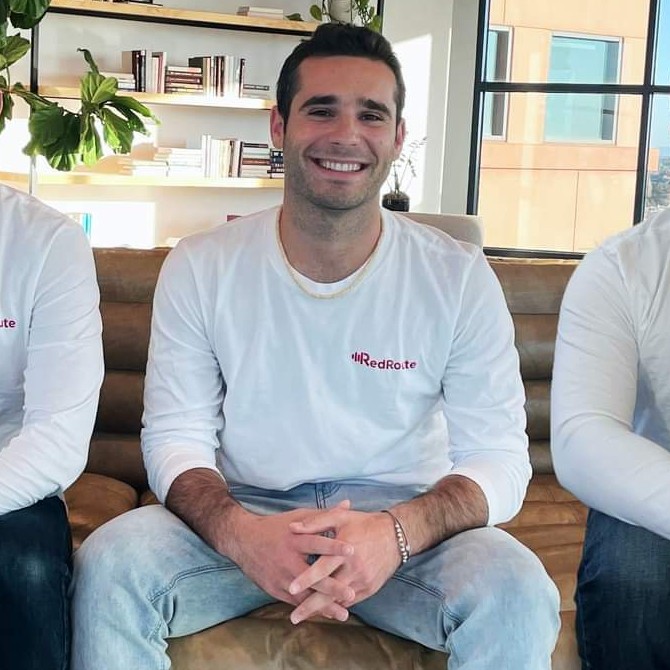
Brian Schiff
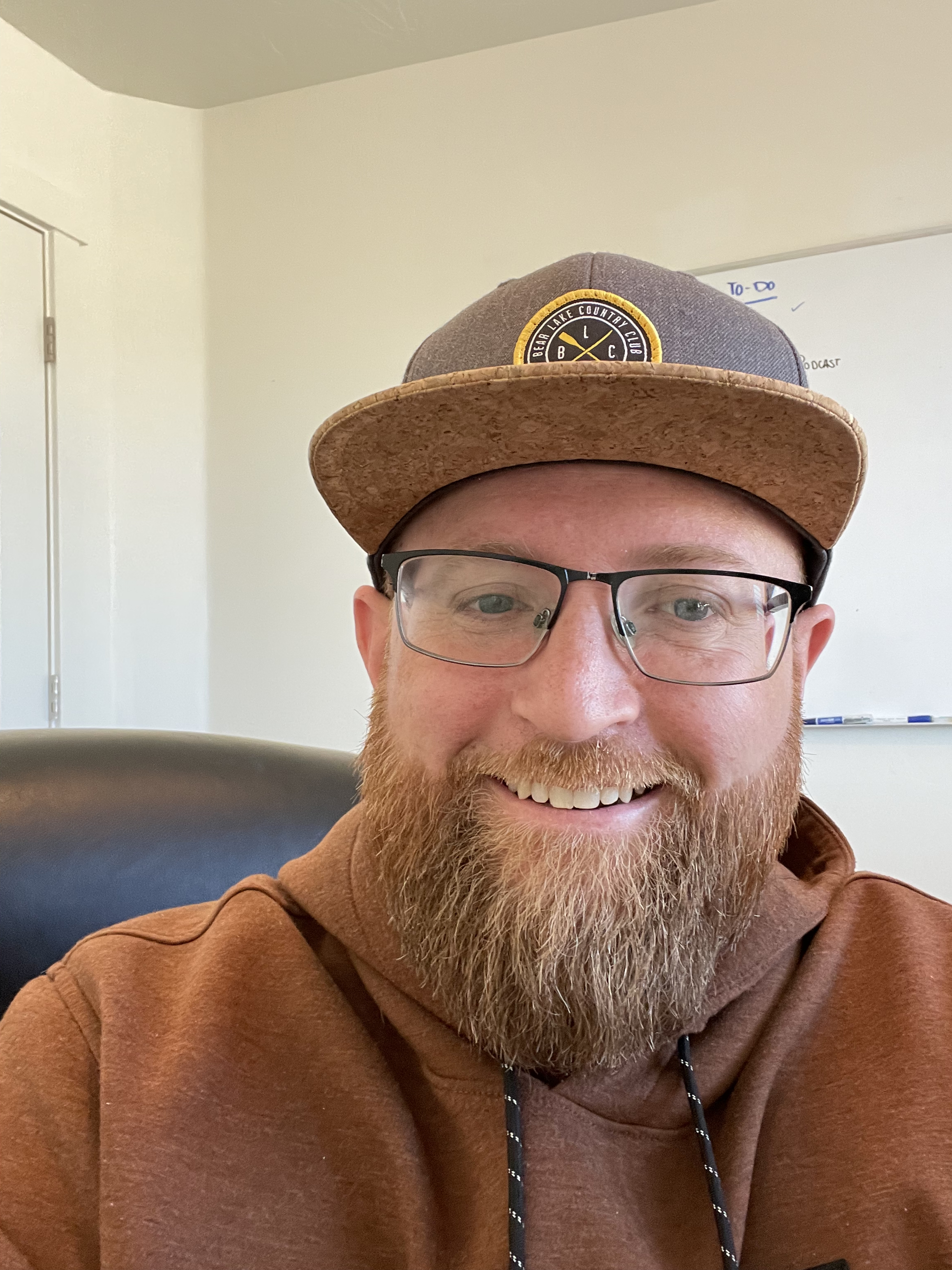
James Gilbert
Today's Guests

